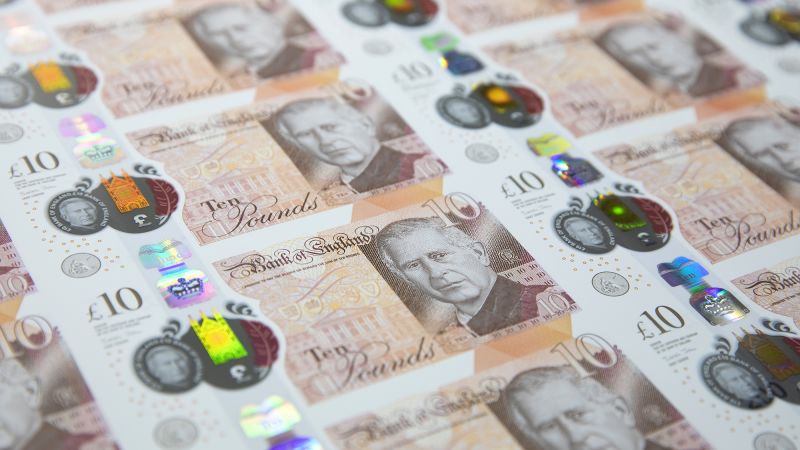A series of record-breaking auctions of King Charles III banknotes by Spink & Sons raised an impressive £914,127 for 10 UK charities, according to the Bank of England. The banknotes, featuring new designs with King Charles, sold for 11.7 times their face value, as collectors sought out the first versions of the new cash. This marked the first time the Bank of England had changed the monarch on its notes, with Queen Elizabeth II being the first monarch to appear on sterling banknotes in 1960. The success of the auctions highlighted the value collectors place on banknotes with low serial numbers, indicating they are among the first printed.
For example, a £10 note with the serial number HB01 00002 fetched £17,000, while a sheet of 40 new £50 notes sold for £26,000, the highest value lot ever sold at a Bank of England banknote auction. Additionally, notes with “lucky numbers,” such as serial numbers ending in 88 and 888, attracted high bids as well. Gregory Edmund, a Spink & Sons auctioneer, noted that banknote collecting is growing in popularity, despite the decreasing use of physical cash in daily transactions. He also mentioned that items related to the Royal family continue to be highly sought after, reflecting a continued interest in Royal history.
The money raised from the auctions will be distributed among 10 charities chosen by Bank of England staff, including organizations like WWF-UK and the Trussell Trust, which supports food banks. Each charity will receive £91,400, with the funds aimed at making a positive impact on people across the UK. The Bank of England highlighted that there are over 4.6 billion physical banknotes in circulation in the UK, amounting to more than £82 billion collectively. When the Bank of England releases new banknotes, it retains some of the first printed notes with low or symbolic serial numbers, which are then donated to individuals or institutions involved in the development of the note.
For instance, when the £5 note featuring Winston Churchill was introduced in 2016, the late Queen Elizabeth was presented with the fiver with the lowest serial number – AA01 000001. The Churchill War Rooms, an underground headquarters for the British government during World War II and now a museum in London, received a new £5 note with the serial number AA01 001945, marking the year the war ended. These practices help commemorate significant events or individuals and contribute to the historical significance of banknotes. The auctions of King Charles III banknotes not only raised substantial funds for charities but also highlighted the value and interest in collecting unique and historically significant banknotes.


